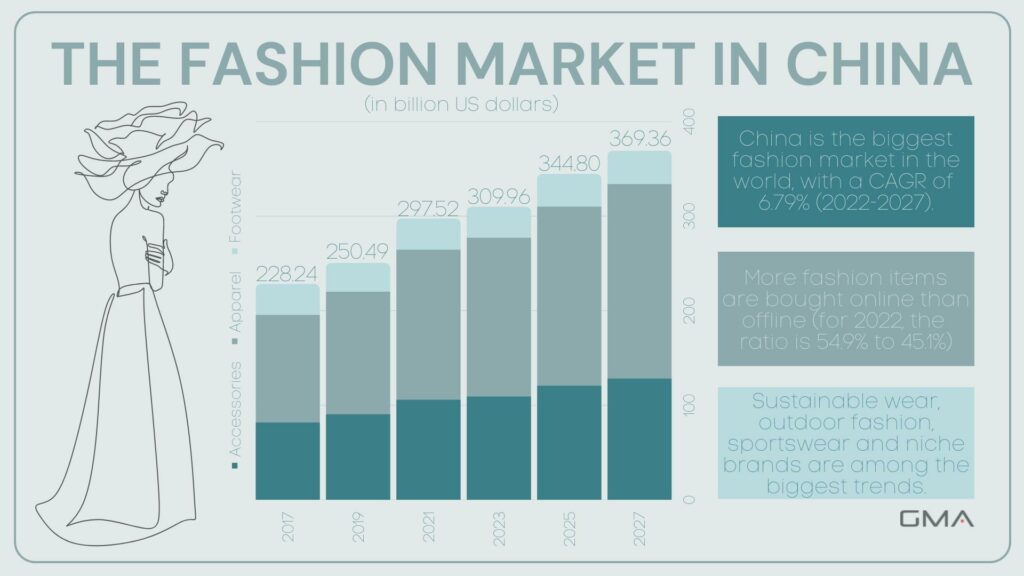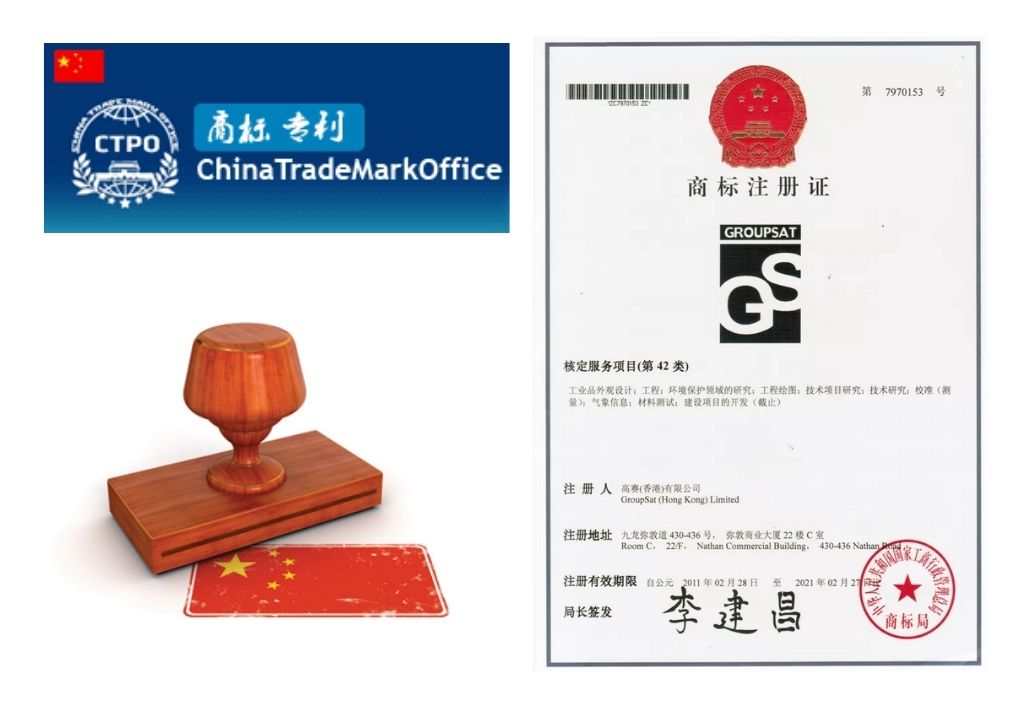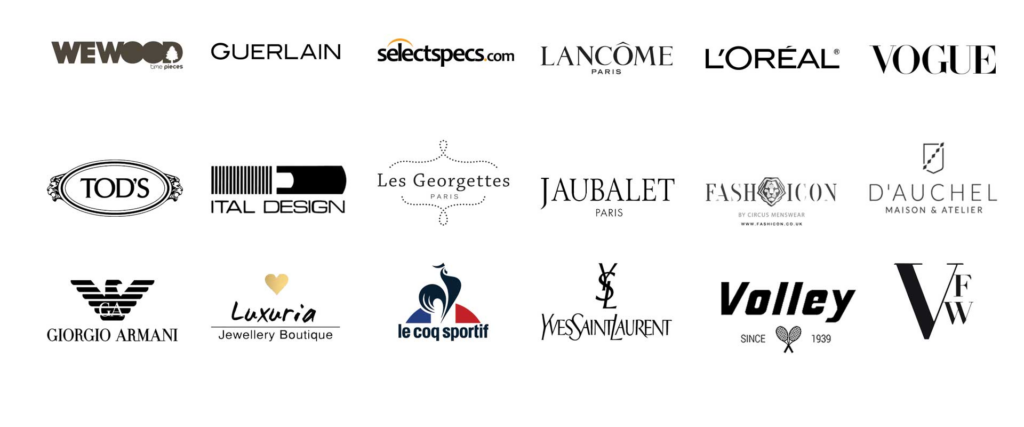The fashion and luxury industry in China has experienced tremendous growth, attracting companies from around the world. To tap into this expanding market, it is essential to register your brand before entering China.
This is particularly important due to the prevalence of counterfeit goods in the Chinese market, which can pose challenges for genuine companies. By registering and protecting your trademark, it becomes more difficult for counterfeiters to use your brand name or logo, as the trademark belongs exclusively to you and you won’t find any identical trademark in China.
While China trademark registration might seem unnecessary, it is a crucial step for local and foreign companies of all sizes.
Many well-known brands have faced dire consequences by neglecting China trademark law, as it is the first step in establishing a business in China.
We will explain the significance of this process and provide guidance on how to register a trademark in China, whether you are based abroad or within the country.
China is the Second-Largest Economy in the World
In 1978, as Chinese President Deng Xiaoping focused on economic development, the country’s output was multiplied by four by 2000. Starting in the 1990s, China increased its participation in global organizations and assumed a prominent position in global political and economic activities. Since the introduction of economic reforms in 1978, China has become the world’s manufacturing hub.
Now, the Chinese economy has experienced astonishing growth in the last few decades that catapulted the country to become the world’s second-largest economy with 400 billion yuan in revenues in 2023.
Thus, the fashion and luxury industries are amongst the most promising and lucrative for the years to come, especially when it comes to foreign luxury brands, with Chinese consumers more than ever ready to spend thousands of dollars on fashion and luxury goods.

With outstanding growth in several promising and lucrative sectors such as new technologies and e-commerce. The tech-savvy population now represents a tremendous opportunity for brands to increase their sales and reputation in China thanks to social media and online platforms.
Thanks to China’s digitalization, it is also easier than ever for Chinese consumers as well as Chinese companies to look for inspiration from other brands. However, it can sometimes lead to counterfeiting or intellectual property abuse. That’s why companies should protect themselves from potential competitors and other companies that are trying to make money on the backs of others.
China and its counterfeit products

China has long been associated with the production and distribution of counterfeit products. The country’s vast manufacturing capabilities and lower production costs have made it a hotspot for counterfeit goods, ranging from electronics and luxury items to pharmaceuticals and even food products. While the Chinese government has taken steps to crack down on this issue, the problem still persists.
So if you have been to China, you have probably seen some street shops selling counterfeit products with the Louis Vuitton or Gucci logo (sometimes written upside down, with a spelling error, or even almost exactly the same as the original). Counterfeiting has always been a major issue for international luxury brands but is also starting to affect smaller brands as well.
Therefore, from the moment a brand starts to be well-established among Chinese consumers, there’s the possibility that one day, you’ll find counterfeits of your products both online and offline, sold by grey-market suppliers, or even ‘trademark squatters’.
Registering a trademark in China
Many brands have contacted us with interest in expanding their activities into China-but very few were aware that they had to go through a trademark application before anything else could happen on e-commerce platforms like Alibaba or JD.com.
Having your registered trademarks as a foreign company in this country has many benefits: firstly, it gives peace of mind when doing business with Chinese consumers, as well as when dealing with other business partners. Secondly, there are fewer chances financial disputes will arise between all parties involved due to ignorance over copyrights/patent infringements since everyone is aware of the trademark, etc.
What does “registering a trademark” in China mean
It means that you will officially register your brand name and products in China.
International firms do often assume that just by registering their trademarks in their home country, they will be recognized in China as well.
However, the Chinese system does not recognize trademarks registered in other parts of the world and will grant juridical protection only to companies that were registered in Mainland China.
Registering a trademark in China is critical
Around the world, depending on the country you sell your products, several agreements were made in order to facilitate trade between the different parties. In most countries, your trademark will be available from the moment you’ll register it, and then you’ll have a few documents to complete in order to sell your products abroad.
In China, it is different, as the government only acknowledges trademarks that are registered within the country’s own jurisdiction. As mentioned earlier, this means that even if your trademark is registered in your home country, you’ll have to register it again in China. On top of that, if you are not able to do so before another company registers it, you’ll be unable to sell your products under your own brand name.

Why do I need to register my trademark again in China?
China is home to many of the world’s largest economies, but it doesn’t have a mutual trademark agreement with any other country. This means that if you want your business’ trademarks recognized in China, then they’ll need to be registered again for recognition as yours there.
For example, even if you are the founder of your own brand, trademark squatters will be able to sell freely products under your brand while you won’t be able to do so with bad faith registrations. Several brands have contacted us to say how much they were desperate because another company had already registered their trademark. The problem is that it is extremely difficult, long, and fastidious to get your trademark back, and you’ll have to pay quite a huge amount of money to get it back.
Registering your trademark is one of the most important steps you can take to protect yourself in China. By registering, not only do you have all rights for your product but also protection under Chinese law from competitors copying and selling illegally distributed copies.
The best advice we’ll give is to register as soon as possible so that when it comes time to sell products or open up a business – no other company will be able to steal anything without legal repercussions.
Trademark Dispute example: The Muji vs Natural Mill case

One of the most well-known intellectual property violation cases in China recently has been Muji, an established Japanese fashion company whose lackadaisical attitude towards registering its trademarks for the entirety of its products proved detrimental to the brand.
Muji prioritized focusing on advertising and marketing campaigns with no thought given as to whether they should verify or even have a registered trademark if it could help protect against infringement from other brands.
In the meantime, a local brand (a copycat brand) had already registered the trademark ‘无印良品’ (Natural Mill literal translation of its Chinese name) which has exactly the same three last characters and the first one being extremely similar in terms of sound as Muji’s Chinese brand name ‘ 無印良品 ‘.
Natural Mill accused Muji of using “their logo”. To put an end to this, Muji was sentenced by The Supreme Court of Beijing to pay 626,000 yuan ($89,000) in compensation to Natural Mill. After paying the fine to the copycat, Muji had to issue a public apology to the copycat company for trademark infringement.
Don’t be like Muji, register your brand within China’s trademark system and save yourself from troubles down the line.
How to Register a Trademark in China?
Things to know before registering your trademark in China
First of all, if you want to gather information about registering a trademark in China, you can directly go to the Trademark Office of the National Intellectual Property Administration‘s website. However, as everything is written in Chinese, you’ll need the help of a translator or a native Chinese to help you. You can also contact us to be accompanied by our native experts.
Then, as mentioned earlier, registering a trademark in China means that you are unique. That’s why conducting in-depth research to see if your trademark is available is highly recommended. In fact, if your trademark is already registered, your application process will automatically be rejected, which will cost you time (you’ll have to start all over again) and money (no refund possible).
Steps to register your trademark in China
- Get to know and understand the Chinese market
- Conduct research about your field of activity, your competitors, the trademarks already deposited, the targetted audience, etc
- Go to the Trademark Office of the National Intellectual Property Administration for trademark applications
- Look for information about the different ways of registering your logo or your brand name (also in Chinese characters)
- Choose the different classifications you want to apply for (45 categories of products, each having several subclasses)
- Be prepared to register both your original brand name, but also your Chinese character name if you have one (which is highly recommended for all foreign applicants)
- Prepare all the required documents for international registration
- Confirm your foreign and Chinese address (it must be identical to the company’s certificate or your passport depending on the situation)
- Submit your application and wait for the result

How long will the process take?
The process for registering a trademark in China can vary in length, but it typically takes around 12 to 18 months. This includes the time required for the application to be reviewed and approved by the Chinese Trademark Office.
However, please note that this timeframe can be affected by various factors, such as the complexity of your trademark and the workload of the authorities. It’s always a good idea to consult with a legal professional who specializes in intellectual property to get accurate and up-to-date information regarding the registration process.
How much will I have to pay for China trademark registration?
- You will have to pay 270 RMB for an online application for your trademark certificate, and 300 RMB if you want to apply by paper
- If you want to be accompanied by an agency, prices can start at 500 yuan to thousands of yuan according to several criteria
What do I need to do to get my trademark certificate?
- You will have to prepare a bunch of documents to show that you are qualified and reliable to be able to sell your products in China (including a stamped copy of your business license). You will also need to provide a scanned copy of the POA (Power of Attorney) (POA) with your signature, as well as your company’s certificate or your own passport if you individually apply for it.
- Then you will have to create an account and fill out all the forms on the same website again
- After that, you will have to wait approximately 3-4 months to receive your application and confirm online your trademark certificate
NB: By registering your trademark, you will probably just want to register your brand for your specific industry, but be careful, if you do so, it means that other companies will be able to register the same trademark for another industry. If you want to register for the cosmetic and fashion industries, for example, it will double the application costs.
For example, Lancôme, which is specialized in cosmetics, also registered its trademark for consulting and financial industries as well, in order to avoid being copied by other companies.
The difficult part is to predict how much will your brand grow in popularity in China, and how competitors will react to this. If you want to start by registering your trademark in the fashion industry, for example, competitors will still be able to register the same trademark to sell their phones.
Back in 2016, a brand was able to sell its bags and wallets under the brand “iPhone”, and Apple even loses its appeal in court. If you want to read more about this incredible case, you can look at this article from The Guardian.

How long will my Chinese Register trademark be valid?
The validity of a Chinese Registered trademark typically lasts for a period of 10 years. However, it is important to note that the trademark can be renewed indefinitely, as long as the necessary renewal fees are paid on time.
Renewal applications can be submitted within 12 months before the expiration date or within 6 months after the expiration date, with an additional late fee.
It is advisable to keep track of the expiration date and initiate the renewal process in a timely manner to ensure the continuous protection of your trademark in China.
How many categories do I have to apply for?
There are 45 categories overall, with items under each. Depending on your activities and presence in China, as well as your ambitions to conquer the Chinese market, you will apply for the most strategic categories.
For example, if you are in the luxury industry, you should register your trademark for the fashion, cosmetic, beauty, etc. industries.
However, you will have to buy the whole category, even if it includes items you don’t need, and you will have to pay 270 RMB for each one of them. That’s why the price can quickly escalate. Also, it is mandatory to register as well your logo as quickly as possible to avoid being copied! Moreover, you should register both your English brand name as well as your Chinese brand name as soon as possible.
If you want to know how to create your Chinese brand name, you can read our detailed article here.
Lastly, most companies only think of registering their trademark under their original name, but it can also be interesting to register the name not only in a horizontal way but also written in a vertical way as well to avoid being copied.
Don’t forget that in China, the game is even more complicated as Chinese companies can play with the sound, to copy your brand in terms of phonetics or meaning without using the same characters, orders, logo, etc.
Case Study
One example of a luxury brand that registered a trademark in China is Louis Vuitton.
Louis Vuitton is a renowned luxury brand that has successfully registered its trademark in China to protect its brand identity and prevent counterfeiting.
By registering their trademark in China, Louis Vuitton ensures that their products are recognized as authentic and that their brand is protected from unauthorized use.
This case study highlights the importance of trademark registration for fashion brands operating in China’s market.
Contact us for trademark registration
The Chinese market is one of the most promising in the world in terms of opportunities, both for smaller companies like startups, but also for larger international companies.
But in order to succeed, you will need to adapt to the Chinese market as well as follow China’s regulations in terms of intellectual property and trademarks.
As you depicted all along this article, registering your trademark is the 1st step you should do when entering the Chinese market.
We are a China-based marketing agency offering cost-effective solutions to foreign brands interested in tapping into the Chinese market. Our team of Chinese and foreign experts has the experience and know-how needed to succeed in this lucrative, yet complicated market.
Gentlemen Marketing Agency offers many digital marketing and e-commerce solutions, such as web design, e-commerce and social media marketing strategies, localization, market research, KOL marketing, and more.
Don’t hesitate to leave us a comment or contact us, so that we can schedule a free consultation with one of our experts, that will learn about your brand and present you the best solutions for your China market strategy.







